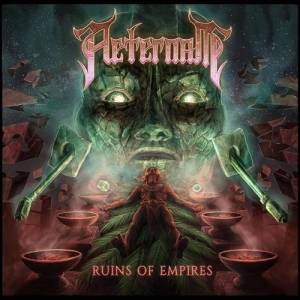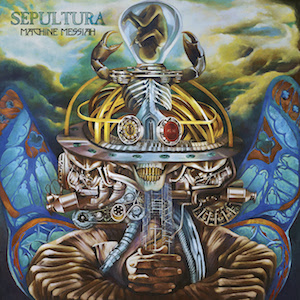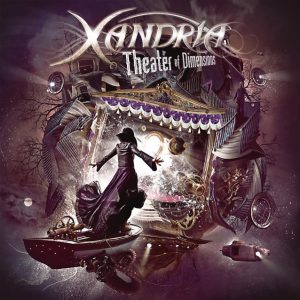Its been an interesting month and a half in metal, mainly because I can’t remember the last time so many of my longtime favorite artists have released something within weeks of one another. One of which we’ll talk about sometime soon with their upcoming two-disc retrospective, but for now both Iced Earth and Vintersorg have new albums out. Iced Earth was one of the first non-mainstream metal bands I found my way to, by virtue of repeatedly seeing their album Dark Saga in the Best Buy racks circa 1996/97. On one of those trips to the old big box, I ended up picking it up out of sheer curiosity due to its cover constantly catching my eye, and it was a revelation, an almost symbiotic merging of Iron Maiden with Metallica. Little did I know initially (but would soon find out) that Iced Earth was one of the sole bands flying the flag of traditional metal throughout the early 90s. And then there’s Vintersorg, one Andreas Hedlund, whose Odenmarken’s Son and Cosmic Genesis was my introduction to folk-metal (frankly I didn’t even know such a thing existed until I got wind of those albums in 2000). He’s had an interesting, evolving discography throughout his solo project and his work in Borknagar, and the past few Vintersorg releases have seen him slowly coming back to a more rootsy, folkier sound as opposed to the proggy experimentation he was delving into a decade ago. That path has led him to create music that reminded him of his 1998 folk-metal landmark Till fjälls, and resultingly he realized that he had stumbled onto creating its direct sequel, nearly twenty years later.
 Iced Earth – Incorruptible:
Iced Earth – Incorruptible:
I guess the first thing I should mention before discussing the new Iced Earth album is how much I flipped from my initial opinion of 2014’s Plagues of Babylon, which at the time of writing its review I thought was pretty solid. I listened to that album fairly consistently until I saw the band in concert on their North American trek a few months later, and that really was the last time I did until relatively recently for the purposes of preparing for this review. That’s never a good sign, for years to pass without revisiting an album is a sure sign that it was at best average and possibly even a little below that, right? My recent re-listens through Plagues have proven my original review to have been a little too generous, perhaps the beneficiary of just how enthralled I was with 2011’s still excellent Dystopia. I suspect now that there was a little confirmation bias creeping in, my fanboy-ism at the band’s third act succeeding so triumphantly with the addition of Stu Block that I let it influence my opinion of the music. The reality is that the band stumbled on Plagues, a record with a few highlights (the fun, romping cover of “The Highwaymen” being one of them), but largely a plodding, tiring, un-melodic affair (see the title track for an example of all three). In retrospect I wonder if the exhaustive touring cycle for Dystopia (the band’s longest ever) and the interruptions of stints opening for Volbeat on a desirable arena tour sapped the band’s reserves of energy all the way through the writing process of that album. Jon Schaffer has recently commented that he felt the album was rushed, and I can’t help but agree if he’s talking about the songwriting/pre-production period. The songs weren’t there.
So Incorruptible sees the band knowingly trying to rally, and Schaffer has stripped everything down its core elements more than ever. This is the first Iced Earth album not to feature a concept in any way (I’m not saying that every release they’ve put out was conceptual as a whole, but there were conceptual aspects to portions of every album). This is a telling feature, a way for the band to re-orient themselves to recapture their basic songwriting spirit, and despite vocalist Stu Block’s four songwriting credits, this is a largely Schaffer guided album. Ten songs (one surprisingly interesting instrumental) that are in many ways a prism though which the entire Iced Earth discography can be seen, with hints of previous eras coming to the fore with every track. It might even be a little disingenuous to characterize it as a back to basics album, because this was never a band that did anything basic —- concepts and grand ambition were always a defining trait of Schaffer’s vision for the band. More accurately, if there ever were an album deserving of a mid-career self-titling, this would be it (as loathsome as the very idea of a veteran band releasing a self-titled album is… ahem, Queensryche). Its a representative statement of the things this band can do, from galloping Maidenisms to thundering war-anthems to their distinctive approach to semi-ballads, this is Iced Earth 101 if you will.
And as an introductory course, it succeeds wildly. I haven’t had this much fun, real tangible joy in listening to an Iced Earth album since 2004’s The Glorious Burden. It barrels out the gates with the viking ode “Great Heathen Army” with a real sense of propulsion its aggressive streak that courses throughout the entire song. Block wrote the lyrics and vocal melody on this one, and he’s back in his Dystopia era form, crafting tight, sharp, memorable vocal melodies. The most vivid example of this comes on the next track and album highlight, “Black Flag”, a deftly written, Maiden-esque anthem about the golden age of piracy sans any trace of the Disney factor that has contaminated this subject matter in other bands such as the dreadful Alestorm. Its an adrenaline charged song, and my absolute favorite on the album —- that chorus is spectacularly written: “We live out our last days / With barrels of rum, black powder / And the clash of the blades”. But the terrific lyricism doesn’t end there, as heard in the second verse: Stories foretold/ Of silver and gold / And the empires greed / Well god damn the queen / We’ll string up the kings / We’re rogues of the seas / The freest of men / Fly no colors at all / And our creed is our own…”. The alliterative rhyme scheme at work here is not only phonetically sound, but instantly memorable, set to a tightly controlled yet loose and lively melody. Its one of Iced Earth’s most inspired moments, not only of this album, but of their entire career (to this fan, its an all-time classic).
The Schaffer-ian semi-ballad makes its welcome return as well, in the form of “Raven Wing”, a track whose sound profile is so similar to The Dark Saga that you’d swear it was a Japanese bonus track from that album. There’s a nod to classics such as “I Died For You” and “Melancholy (Watching Over Me)” in its intro segue, but then it unfolds into a mid-tempo stomper built on slabs of gritty, earthen riffs with open chord sustains. The guiding melody is left to Block, who has always reminded me of a meeting point between Matt Barlow and Tim Owens vocal approaches, and he recalls both in varying shades here. That’s not a knock on Block, and in a way, I suspect that Schaffer’s writing style naturally results in his vocalist having to sing in a way that recalls touches of the past (because how else could this song be sung… can’t go too low, a baritone would clash with the tonality of the music, nor can you go too high, a helium touched vocal would sound bizarrely out of place). It simultaneously a comforting slice of Iced Earth nostalgia and yet still reverberates as something fresh and genuine. The same can be said for “The Veil”, whose similar semi-ballad composition gives Block one of his shining moments, a chorus where his emotional range is on full display (the harmony layering later in the track is satisfyingly sweet).
 When the initial preview track “Seven Headed Whore” was first released, I was a bit taken aback by what I believe I described as its modern day Slayer vibe. Now after having sat with it for a few months and hearing it in the context of the album, particularly as a change of pace after those aforementioned preceding semi-ballads, it holds up a little better. It actually feels like a spiritual cousin to “Violate” from Dark Saga, which also wasn’t my favorite track on that album but helped to inject some welcome variation in a largely mid-tempo album. I’ve read some criticism online of its overtly political lyrical theme, and Schaffer’s had his share of critics and derision when he discusses his views on, well, everything in interviews. All that aside, I’ve always found Schaffer to be one of the most interesting, thoughtful, and engaging interview subjects in metal (his half-hour interview on the bonus disc of Horror Show is a classic). I consider myself a patriotic American citizen, no more or less than others, and it was with Iced Earth that I first heard metal that spoke to that (thinking of classics like “Ghost of Freedom” off Horror Show, and “1776” from Something Wicked). Schaffer’s music was the motivating factor in getting me reading about the civil war for the first time and understanding its historical importance. He’s a valuable voice in metal, regardless of whether you agree or disagree with what he’s said.
When the initial preview track “Seven Headed Whore” was first released, I was a bit taken aback by what I believe I described as its modern day Slayer vibe. Now after having sat with it for a few months and hearing it in the context of the album, particularly as a change of pace after those aforementioned preceding semi-ballads, it holds up a little better. It actually feels like a spiritual cousin to “Violate” from Dark Saga, which also wasn’t my favorite track on that album but helped to inject some welcome variation in a largely mid-tempo album. I’ve read some criticism online of its overtly political lyrical theme, and Schaffer’s had his share of critics and derision when he discusses his views on, well, everything in interviews. All that aside, I’ve always found Schaffer to be one of the most interesting, thoughtful, and engaging interview subjects in metal (his half-hour interview on the bonus disc of Horror Show is a classic). I consider myself a patriotic American citizen, no more or less than others, and it was with Iced Earth that I first heard metal that spoke to that (thinking of classics like “Ghost of Freedom” off Horror Show, and “1776” from Something Wicked). Schaffer’s music was the motivating factor in getting me reading about the civil war for the first time and understanding its historical importance. He’s a valuable voice in metal, regardless of whether you agree or disagree with what he’s said.
Its being said that perhaps Incorruptible is a little too front loaded, that the second half doesn’t hold up as well, and while I mostly disagree with that I can concede that “Relic (Part 1)” isn’t the most captivating song. Its not bad, and I like the different delivery that Block takes on some of the verse segments, but it could benefit from being a little shorter and its chorus a little punchier (its all a little too mid-tempo-y throughout, a sharp variation could’ve helped here). I’m also not sure if its deserving of a sequel, as indicated by its title but hey, we’ll see how that turns out next time. I do love the melody at work in the instrumental “Ghost Dance (Awaken the Ancestors)” (again quipping on the title, does an instrumental really need a parenthetical?), but I feel like this could have been turned into a fantastic proper song if they had just given it a little more time. That being said, they did the instrumental thing right, leaning hard on a melody that is strong enough to carry a tune without words (and hey, its another nod to the structure of past Iced Earth albums). The rounding out tracks “Defiance” and “Brothers” are beefy, reliably catchy workhorse numbers that don’t detract from the overall album quality, particularly the former with its Priest-ian vocal bridge. And while its intro runs a little long for my liking, I do love “Clear the Way (December 13th, 1862) for its thunderous, Glorious Burden-esque battle scaping vocal narration (“Forward! Clear the way!”). Frankly, there’s no one better at crafting inspiring, ultra-melodic, patriotically themed guitar melodies than Schaffer.
The overall result here is a win for Iced Earth, a rebound from the rushed and tired Plagues of Babylon and at the same time, a sort of career retrospective set to new music. The latter detail is particularly noteworthy when considering this is their last album on their current Century Media contract (their second stint with the label after some time away, and presumably, after having repaired a frayed relationship). In the time leading up to the pre-production for this album, Schaffer bought a building in which to house the band’s rehearsal space, recording studio (primary tracking only, not mixing), merch warehouse, and general business offices (Wintersun’s wet dream in other words?). It was a decided move towards perhaps seeing the next Iced Earth album released entirely independent of a record label, and Schaffer clearly relishes that possibility. If anyone can make it happen, Schaffer certainly can, and he’s seen his contemporaries try it in differing ways: Blind Guardian owning their own Twilight Hall recording studios to make multi-year long sessions possible; Kamelot self-releasing Poetry For the Poisoned in North America; Therion’s Christofer Johnsson betting on his mortgage in self-financing the French pop covers album Les Fleurs du Mal (and succeeding!). I know this is business talk all of a sudden, but the next Iced Earth album will certainly be interesting in more ways than just the music. For now, Incorruptible is more than enough to sustain us til then.
 Vintersorg – Till fjälls, del II:
Vintersorg – Till fjälls, del II:
Still can’t believe this is here. The idea of a sequel to Till Fjalls just seemed to good to be true, particularly since I thought surely we’d get the fourth album in the four elements cycle Vintersorg had been locked into since 2011 first. And certainly I never thought that Vintersorg was the kind of artist interested in revisiting something so deep from his musical past, particularly when he’d ventured so far away from his native Scandinavian folk roots in the pursuit of a more progressive driven direction. Vintersorg is unique for more than a handful of reasons, but among the most important of those are his central presence in the history and formation of folk-metal as a subgenre, both through his namesake project but also through the two albums he released with Otyg. Then there’s also the fact that he is criminally overlooked by the metal media as a whole, never given the proper due, respect, or attention by the big print media publications. The fact that it wasn’t until minute 38 of the 42 minute running time of Lock Horns “Folk Metal” debate/discussion that Vintersorg was put up on the board still rankles in my mind as a slap in the face to those of us who’ve long known about Mr. V (as his longtime Ultimate Metal Official Vintersorg Forum members know him to post as). To guest host Natalie Zed’s great credit, she seemed to immediately recognize it as a glaring omission and immediately corrected the oversight (she’s the real deal when it comes to folk metal knowledge by the way, see her reviews on Angry Metal Guy). Hopefully, with the release of this unexpected but breath of fresh Norwegian winter air sequel, heads will turn and we can start getting Mr. V some deserved respect (dammit).
For anyone not following the story, in hearing this album you’d be surprised to know that less than three years ago, Vintersorg was uncertain about his future as a vocalist in general. He suffered a traumatic brain injury by falling off a ladder, the damage being three cracks in his skull, brain hemorrhaging, and dysfunction in his ear. When he chimed in personally for an update in April of 2015, he claimed to be uncertain of when he could even attempt a return to music. Its been said that most (if not all) of his vocals on Borknagar’s early 2016 Winter Thrice release were actually recorded sometime in 2014 before the accident, so Till Fjalls del II might actually be the first post-accident vocals we’re hearing from the man. Well, I’m pleased to hear him sounding on top form here, not only from an artistic and fan standpoint but from a personal one as well. This album is not only a triumph for his fans, but for Mr. V himself, he’s gotta feel really good about his performance here —- because in many ways, Till Fjalls del II is superior to the original, in both songwriting execution as well as the more obvious upgrade on the sonic level. It might be jumping the gun to call it yet another one of his masterpieces, but damn it all if it doesn’t feel like it is one. And in a year when real, gritty, spiritual folk metal seems to be making a long overdue comeback (check King of Asgard and Wolfheart’s releases), Till Fjalls del II is like hearing the horn of the Rohirrim at the Battle of the Pelennor Fields. Our rescue from the dumb comic pageantry of Korpiklanni, Equilibrium, modern day Finntroll and Leaves Eyes may very well be at hand.
 I know I rail against that kind of stuff hard, but it wasn’t an attitude I came to easily. For years I gave a lot of those bands leeway and a ton of patience, but where they ended up is so far from what I loved about folk-metal in the first place. In the liner notes of the awesome 2000 release Cosmic Genesis, Vintersorg thanked Carl Sagan, and delivered the still shiver inducing lyrics “In heaven I am a wild ox / On Earth I am a lion… The Scientist of darkness / Older than the constellations…” (on “The Enigmatic Spirit”). In summary, it was so much more elevated, thoughtful, and yes, spiritual than the bizarre, troll cosplaying, beer drinking singalongs that the bulk of the genre degenerated into after Finntroll released their “Trollhammaren” single in 2004. I feel this return to that older spirit when listening to Till Fjalls del II, even more than I did in spare, momentary glimpses on his past three “elements” albums where he did slowly incorporate more of his old folk stylings. Those albums, particularly Solens Rotter and Orkan found Vintersorg trying to regain his footing in songwriting in a less convoluted, progressive structure. They were still infused with the avant-garde quality of Visions From the Spiral Generator and The Focusing Blur, and as a result were at times murky and difficult.
I know I rail against that kind of stuff hard, but it wasn’t an attitude I came to easily. For years I gave a lot of those bands leeway and a ton of patience, but where they ended up is so far from what I loved about folk-metal in the first place. In the liner notes of the awesome 2000 release Cosmic Genesis, Vintersorg thanked Carl Sagan, and delivered the still shiver inducing lyrics “In heaven I am a wild ox / On Earth I am a lion… The Scientist of darkness / Older than the constellations…” (on “The Enigmatic Spirit”). In summary, it was so much more elevated, thoughtful, and yes, spiritual than the bizarre, troll cosplaying, beer drinking singalongs that the bulk of the genre degenerated into after Finntroll released their “Trollhammaren” single in 2004. I feel this return to that older spirit when listening to Till Fjalls del II, even more than I did in spare, momentary glimpses on his past three “elements” albums where he did slowly incorporate more of his old folk stylings. Those albums, particularly Solens Rotter and Orkan found Vintersorg trying to regain his footing in songwriting in a less convoluted, progressive structure. They were still infused with the avant-garde quality of Visions From the Spiral Generator and The Focusing Blur, and as a result were at times murky and difficult.
What separates Till Fjalls del II from those is Vintersorg’s wholesale adapting of old-school folk metal rhythmic structures, including its reliance on intertwined acoustic guitar crafted melodies. Take “Allt Mellan Himmel Och Jord”, where the raw black metal drops away to be replaced by a compelling acoustic folk guitar/piano passage that dramatically shifts the songs direction. Or take the beautiful “Vårflod”, where open chord acoustic pluckings usher in the gorgeous female vocals of folk metal legend (and former/maybe current Otyg violinist/vocalist) Cia Hedmark. This is not only my favorite song from the album, but one of my favorite cuts all year period —- the slowed down, drawn out refrain, built on Vintersorg’s inimitable vocal delivery is just peak majestic folk metal. I love it. Mattias Marklund’s underrated guitarwork is as distinctive and unapologetically melodic as ever, but he gets downright Guns N’ Rosian on “Lavin” during a mid-song solo, showing off a side to his playing that we’ve never heard before. It made me laugh giddily when I first heard it, being so unexpected but awesome.
It is on the whole, far more brutal than the original Till Fjalls ever was, but that’s more down to Vintersorg drawing on all the influences in his career that he’s accumulated since 1998. So we get moments where the progressive touches come to the fore, and others where Borknagar-esque black metal just stampedes all over the place, its all just part of who he is now. In one of the few interviews he’s done for this album, he remarked that when he was sitting down to write this music, ostensibly for the next and final elemental album, he realized that the stuff that was coming out had the swing and folky-step of his old classics. He unintentionally stumbled into making Till Fjalls II, which was described in his official statement in the press release for the album as: “…a heartfelt return to snow capped mountains, pure nature-inspired mysticism, Nordic folklore and real black metal with a captivating epic streak”. Heartfelt is the key word I’m latching onto there, because its exactly what I feel when listening to this, and where the past few Vintersorg albums haven’t moved me as much as I wanted, this one has rocked me to my core. Don’t be surprised to see this on the best albums of the year list, its really that excellent. It’ll certainly be the soundtrack to what I can only hope will be a bitter cold winter.

 Quick little note here in case you’re wondering what the heck happened to the images all across the blog and/or why you’re seeing some awful looking photobucket upgrade notice in place of them. So here’s the deal, this morning (6/30) I and many other now irate Photobucket users discovered that they have changed the terms of their service overnight and with nary a hint of warning to their existing userbase that “3rd party hosting” was no longer allowed unless you ponied up for an upgrade plan. Well, the upgrade plan they’re offering costs 400 bucks a year. Yeah, no thanks.
Quick little note here in case you’re wondering what the heck happened to the images all across the blog and/or why you’re seeing some awful looking photobucket upgrade notice in place of them. So here’s the deal, this morning (6/30) I and many other now irate Photobucket users discovered that they have changed the terms of their service overnight and with nary a hint of warning to their existing userbase that “3rd party hosting” was no longer allowed unless you ponied up for an upgrade plan. Well, the upgrade plan they’re offering costs 400 bucks a year. Yeah, no thanks.



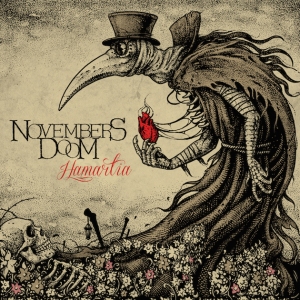




 It was the start of something. No I didn’t go out and beg my mom for the new Megadeth album, I didn’t even know what Megadeth was. But a seed had been planted, the first fires of curiosity stoked in the engine of my metal fandom. I remembered her response for sure, but more importantly, I was left with a faint impression of a world that was mysterious, dangerous, and far more fantastical than the humdrum reality that family visits were entirely composed of. Sometime after this, at yet another aunt’s house where they actually had nascent cable services and MTV, I saw the video for Bon Jovi’s “Livin’ On a Prayer” and my interest in rock music took off.
It was the start of something. No I didn’t go out and beg my mom for the new Megadeth album, I didn’t even know what Megadeth was. But a seed had been planted, the first fires of curiosity stoked in the engine of my metal fandom. I remembered her response for sure, but more importantly, I was left with a faint impression of a world that was mysterious, dangerous, and far more fantastical than the humdrum reality that family visits were entirely composed of. Sometime after this, at yet another aunt’s house where they actually had nascent cable services and MTV, I saw the video for Bon Jovi’s “Livin’ On a Prayer” and my interest in rock music took off. It was more than just rock music that I soaked up on these trips, it was an entire musical pop culture education that spanned across genres. An uncle lived with my grandmother, and due to him the place had cable TV as well. Straining to hear over the house shaking roar of jets frequently taking off a few hundred yards away at San Francisco International, my brother and I saw videos from Bobby Brown, Madonna, Paula Abdul, and Phil Collins. I quietly loved all of it, especially Phil Collins, of whom we must’ve bought a cassette of because I distinctly remember listening to him in the Aerostar as it bounded across cracked roads, steep hills, and narrow avenues (we’d frequently find ourselves bounced out of our seats, no 80’s minivan has shocks good enough to make Bay Area driving comfortable). We listened to the oldies too, the only music my parents would tune the car radio to, and I got an education in Motown’s Holland-Dozier-Holland, The Beach Boys, The Beatles, even Supertramp. My parents were always unwittingly influential that way —- during the first four years of my life when we lived in Modesto, my mom would play ABBA in her Datsun 510, a detail she doesn’t remember (to be fair, she hardly ever remembers the names of musical artists) and along with Kenny Rogers and Crystal Gayle they compose most of my first musical memories.
It was more than just rock music that I soaked up on these trips, it was an entire musical pop culture education that spanned across genres. An uncle lived with my grandmother, and due to him the place had cable TV as well. Straining to hear over the house shaking roar of jets frequently taking off a few hundred yards away at San Francisco International, my brother and I saw videos from Bobby Brown, Madonna, Paula Abdul, and Phil Collins. I quietly loved all of it, especially Phil Collins, of whom we must’ve bought a cassette of because I distinctly remember listening to him in the Aerostar as it bounded across cracked roads, steep hills, and narrow avenues (we’d frequently find ourselves bounced out of our seats, no 80’s minivan has shocks good enough to make Bay Area driving comfortable). We listened to the oldies too, the only music my parents would tune the car radio to, and I got an education in Motown’s Holland-Dozier-Holland, The Beach Boys, The Beatles, even Supertramp. My parents were always unwittingly influential that way —- during the first four years of my life when we lived in Modesto, my mom would play ABBA in her Datsun 510, a detail she doesn’t remember (to be fair, she hardly ever remembers the names of musical artists) and along with Kenny Rogers and Crystal Gayle they compose most of my first musical memories.









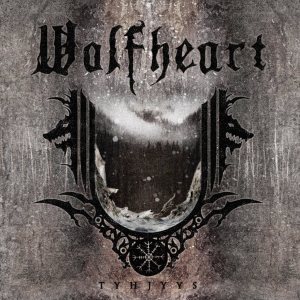 Wolfheart – Tyhjyys:
Wolfheart – Tyhjyys: Evocation – The Shadow Archetype:
Evocation – The Shadow Archetype: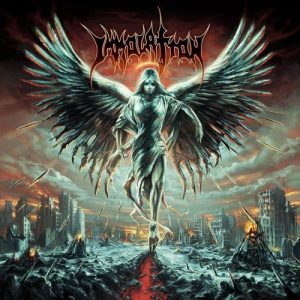 Immolation – Atonement:
Immolation – Atonement: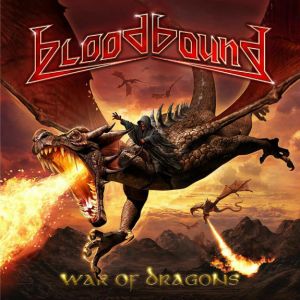 Bloodbound – War of Dragons:
Bloodbound – War of Dragons: Mors Principium Est – Embers of a Dying World:
Mors Principium Est – Embers of a Dying World:
